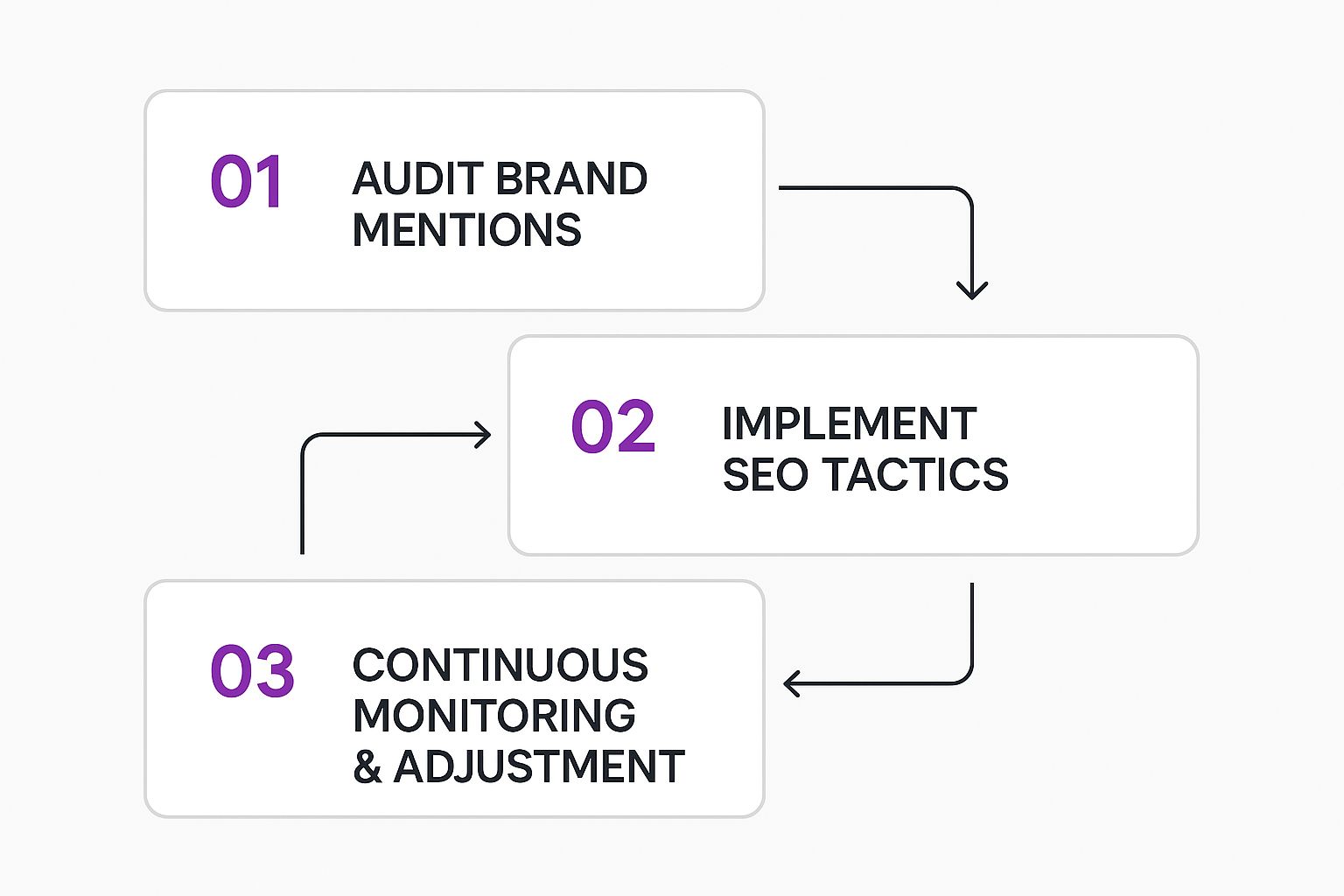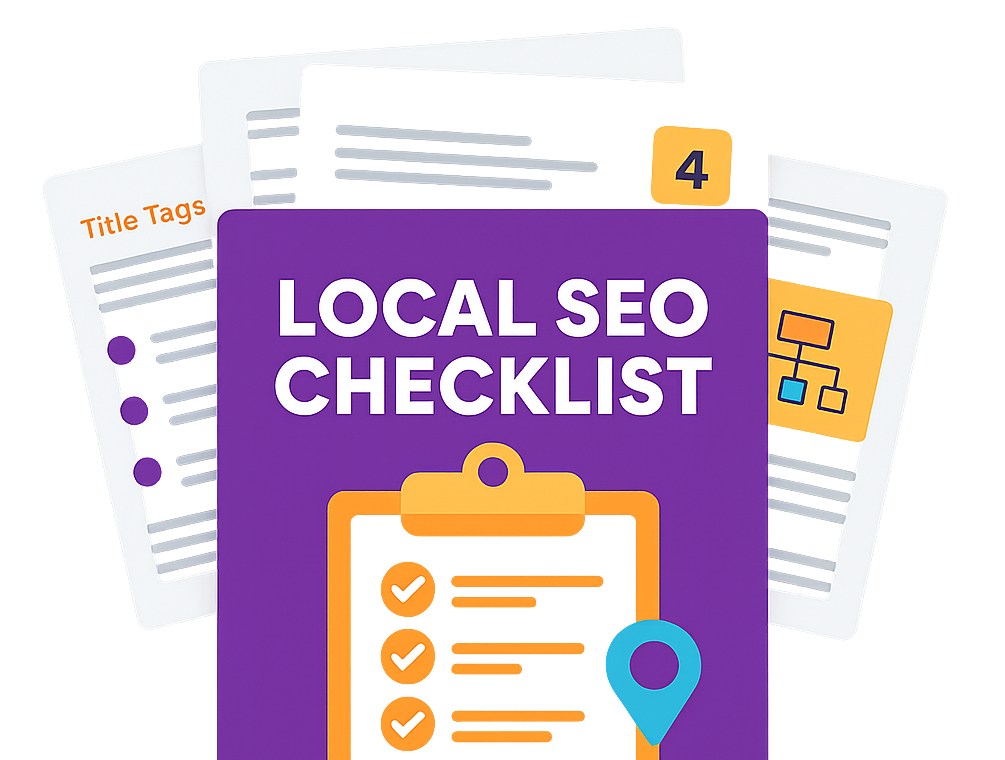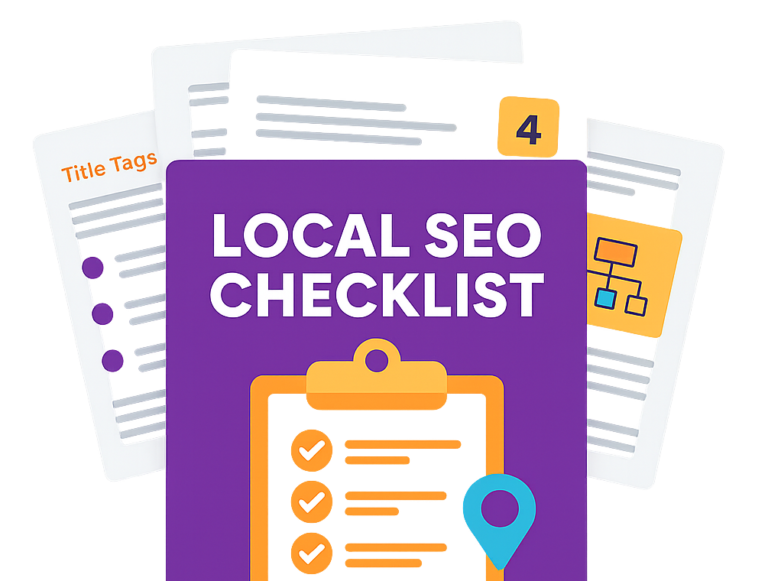When someone Googles your brand, what they find is your reputation. This is why using search engine optimisation to manage how your business is perceived online isn't just a good idea—it's essential.
At its core, online reputation management (ORM) SEO is about taking control of that narrative. It’s a strategic effort to create and promote positive, authoritative content that ranks at the top of search results, effectively pushing any negative or misleading information further down where it’s less likely to be seen. The goal is simple: when a potential customer, partner, or investor searches for you, they see exactly what you want them to see.
Why SEO Is Your Strongest Reputation Defence
A proactive SEO strategy for reputation management isn't just about damage control. It's not about frantically reacting to a bad review. It’s about building a digital presence so resilient that it can withstand scrutiny from the get-go.
Think of it as building a digital fortress. Every piece of positive content you create and optimise—from your company blog and press releases to authoritative social media profiles and positive news coverage—is another brick in that fortress wall. This approach is fundamental because it directly impacts customer trust, commercial success, and the long-term value of your brand.
Building a Resilient Digital Narrative
The main principle is to own the search engine results page (SERP) for your branded keywords. If you control this valuable real estate, you control the story people see. This is critical because an overwhelming majority of users never click past the first page of Google. When that first page is filled with assets you own or influence, you’re in the driver's seat.
You can't have one without the other; a unified SEO and ORM strategy is the only way forward. They are two sides of the same coin:
- SEO gives you the technical muscle to get content ranking high.
- ORM provides the strategic direction, telling you what content you need to rank.
This workflow is the foundation for combining the two disciplines effectively.

From auditing your brand's mentions to rolling out targeted SEO tactics and continuously monitoring the results, you create a powerful cycle of reputation protection. It's a proactive loop, not a one-off fix.
Key Takeaway: Your online reputation isn't something that just happens to you; it's an asset you must actively manage. Fusing SEO with ORM shifts your posture from reactive and defensive to proactive, letting you shape your digital identity before a crisis ever hits.
This proactive focus is mirrored in market trends. In the UK, the enterprise internet reputation management market is set for rapid expansion, projected to triple from over £48 million in 2025 to nearly £190 million by 2035. This surge is fuelled by growing concerns over brand image and the wider adoption of advanced tools for real-time monitoring, including sophisticated uses of AI for SEO. Businesses are increasingly turning to these technologies to secure their brand's future.
Conducting a Thorough Digital Footprint Audit
Before you can build a defence, you first need to map the battlefield. A thorough digital footprint audit is the essential starting point for any effective online reputation management SEO strategy. It gives you a clear, unbiased baseline of how your brand currently appears online, revealing both your strengths and vulnerabilities.
This isn't about just Googling your company name. It means systematically checking your brand’s presence across every digital touchpoint—from search engines like Bing and major social media platforms to those crucial industry-specific review sites. The goal is to create a detailed inventory of your digital assets and liabilities, so you know exactly where to focus your efforts.
Uncovering Your True Digital Presence
To get an accurate picture, you have to see what an impartial customer sees. That means removing your own browsing history and location from the equation, as search engines often personalise results based on what they already know about you.
Here’s how to run an unbiased search audit:
-
Go Incognito. Always open an incognito (Chrome) or private (Firefox, Safari) window. This stops your past search behaviour and cookies from skewing the results, showing you exactly what a new visitor would see.
-
Vary Your Search Terms. Don't just search for your main brand name. You need to audit a wide range of branded queries. I always check things like:
[Your Brand Name][Your Brand Name] reviews[Your Brand Name] scamor[Your Brand Name] complaint[CEO/Founder Name][Product/Service Name] reviews
-
Check Different Locations. If you serve customers nationally or globally, fire up a VPN or use location-emulating tools. You need to see how your brand shows up in different cities or countries, as search results can vary significantly by geography.
As you perform these searches, document everything. A simple spreadsheet is perfect. For the first two or three pages of results, categorise each link as positive, negative, or neutral. This inventory will become your roadmap.
Categorising Your Digital Assets and Liabilities
Now it's time to make sense of what you've found. Every single link that appears for your branded searches is either an asset you can amplify or a liability you need to manage.

- Positive Assets: These are web pages you control that reflect your brand well. Think of your official website, optimised social media profiles (LinkedIn, Facebook), glowing press mentions, and favourable blog posts.
- Neutral Assets: These are factual listings or profiles without strong sentiment but still important for visibility. This includes directory listings, Wikipedia pages, or neutral news announcements. With a bit of work, you can often turn these into positive assets.
- Negative Liabilities: This is the stuff that can really harm your reputation. It might be a one-star review on Trustpilot, a critical article in a local paper, a nasty forum discussion, or a complaint on a consumer rights site.
Identifying these liabilities is absolutely critical. Research shows that over 75% of users never scroll past the first page of search results. A single negative link ranking high can disproportionately damage your brand's credibility before a potential customer even clicks through to your site.
Leveraging Tools for a Deeper Analysis
Manual auditing is non-negotiable, but tools can help you dig deeper and work more efficiently. Brand mention tracking and sentiment analysis tools are great for automating the process of finding conversations about your brand online.
Tools like Google Alerts (a free and easy starting point), Mention, or Brand24 can monitor the web for new mentions of your company, products, or key people, saving you a ton of time.
This systematic approach also extends to your social media. A disorganised or neglected profile can be just as damaging as a bad review. Using a comprehensive social media audit checklist is a brilliant way to guide your evaluation of brand presence and sentiment across all relevant platforms.
By combining meticulous manual searches with automated monitoring, you create a complete and actionable picture of your digital footprint. This audit isn't a one-time task; it's a foundational activity you should revisit quarterly to measure the success of your online reputation management campaign and adapt to any new challenges that pop up.
Building Your Positive Content Fortress
Once you've audited your online presence and figured out where the problems lie, it's time to go on the offensive. This is where proactive online reputation management SEO really starts to shine. It’s not about just reacting to problems; it's about building a powerful buffer of positive, authoritative content that you own and control. Think of it as constructing a fortress around your brand's good name.
This strategy goes way beyond just writing a few blog posts. We're talking about creating and optimising a whole network of branded digital properties. Your corporate blog, a dedicated press section, targeted microsites, and even powerful profiles on platforms like LinkedIn all become assets. Each one is engineered to rank for your brand name and push negative results further down the page where no one will see them.
Developing Your Content Blueprint
The foundation of this fortress is a solid content plan. A scattergun approach just won't cut it. You need a structured calendar that consistently reinforces your brand’s expertise, values, and positive stories. It's not just about what you create, but where you publish it.
Your content strategy should map out a few key types of owned media:
- Your Corporate Blog: This is your home base. Use it to publish in-depth articles, company updates, and thought leadership pieces that really show off your industry expertise.
- A Dedicated Press Section: This should be a hub for all your good news—positive media mentions, press releases, and company announcements. It becomes the go-to resource for journalists and anyone researching your brand.
- Authoritative Social Profiles: Fully build out and actively maintain profiles on key platforms. For corporate or B2B reputation, a well-optimised LinkedIn profile is non-negotiable, as they often rank very highly for branded searches.
- Targeted Microsites: Got a major product launch or a big initiative? A separate microsite can be a fantastic way to dominate the search results for specific, long-tail branded keywords related to that campaign.
For instance, a Cambridgeshire-based tech firm could create a series of blog posts on local industry trends, fire out a press release about a new charity partnership, and publish an in-depth LinkedIn article from its CEO on the future of tech in the region. Every single piece helps build a positive, localised story.
Creating High-Impact Content Formats
The type of content you create is just as crucial as where it lives. To effectively shove negative items down the search rankings, your positive content has to be seen as more valuable and authoritative by Google. That means focusing on high-impact formats that scream expertise and credibility.
Just look at a site like Wikipedia. It consistently ranks at the top of search results because of its perceived authority and incredibly structured content.

This screenshot shows a highly organised page with clear sections, tons of internal links, and a focus on factual information—all signals that Google absolutely loves. If you can emulate this focus on quality and structure, you give your own content a much better shot at ranking.
Focus your energy on producing these kinds of assets:
- In-depth "Pillar" Articles: These are the big guns—long-form guides of 2,000+ words that cover a core topic in your industry inside and out. They establish your website as a definitive resource.
- Detailed Case Studies: Nothing beats showing your successes with real-world data and client testimonials. They provide powerful social proof and build immediate trust.
- Comprehensive White Papers and Reports: Offer unique data or insights that position your brand as a genuine thought leader. These are also brilliant for attracting high-quality backlinks.
- Positive News and Press Releases: Announce new hires, product updates, awards, or community involvement. Get them distributed through official channels to gain wider visibility.
This entire approach is central to modern reputation management in the UK, which has grown far beyond simply managing reviews. Today, it involves looking after a brand’s entire digital footprint, from monitoring what’s being said to actively amplifying positive stories across every channel. To see how this works in practice, it’s worth exploring the comprehensive strategies that top UK reputation management companies use.
Expert Tip: Don't just publish content and cross your fingers. Every single piece you create must be optimised for a specific branded keyword. A case study about a successful project, for example, should be optimised for terms like "[Your Company Name] results" or "[Client Name] case study". This ensures each asset is directly competing with negative results for that precious search visibility.
Building your content fortress is an ongoing job of creation, optimisation, and promotion. It’s a serious investment in your brand’s long-term health, making sure that when people search for you, they find a story of credibility, expertise, and trust—a story written and controlled by you. This proactive stance is the difference between simply defending your reputation and truly defining it.
Right, so you've managed to create some positive content to counter the negative stuff floating around online. That’s a solid start, but let's be honest—it's only half the job. If you want that positive content to actually do anything, like outrank the bad press, you need to give it some serious muscle. This is where technical SEO comes into play.
Think of your positive assets—your website, blog posts, and positive news features—as your frontline soldiers. Technical SEO is the armour, the high-powered weaponry, and the battle strategy that gives them the edge to win. It’s all about fine-tuning your owned properties so search engines don't just find them, but see them as the most authoritative and relevant results for searches about your brand. This turns your content from a hopeful message into a powerful defence.
On-Page Optimisation for Maximum Impact
First things first, you need to get your on-page SEO right. This is the bedrock of any successful reputation campaign. It’s the process of optimising individual web pages so they rank higher and pull in the right kind of traffic. For reputation management, this means being laser-focused on every single positive piece of content you control.
You can start with the fundamentals of any good technical audit. Our agency uses a detailed technical SEO audit checklist that covers everything from site speed to mobile-friendliness, all of which are critical here. But for reputation specifically, you'll want to dial in on these elements:
- Strategic Keyword Placement: Your brand name is your most important keyword. Make sure it appears naturally in your page title, URL, meta description, and somewhere in the first 100 words of your text.
- Compelling Meta Titles and Descriptions: These are your adverts on the search results page. A title like "Official Statement from [Your Brand] on Recent Events" carries far more weight than a generic blog post title.
- Smart Internal Linking: You need to link from your most powerful pages (like your homepage) to your new positive content. This is how you pass on authority and signal to Google that this new page is important.
A critical mistake I often see is companies publishing a press release on their blog without optimising it. An unoptimised page is like a soldier sent into battle without a weapon—it’s unlikely to achieve its objective.
The Power of Schema Markup
Schema markup is your secret weapon for controlling how your brand looks on the search results page. It's a bit of code you add to your site that creates those enhanced descriptions, often called rich snippets. For online reputation management SEO, it’s incredibly powerful.
By implementing specific types of schema, you can make your positive results more eye-catching and informative, which encourages more people to click on them instead of the negative links.
- Organisation Schema: This clearly tells Google about your official company name, logo, and contact info, helping to cement your official website as the definitive source.
- Review Schema: Got positive testimonials? Mark them up with review schema. This can display star ratings right there in the search results, giving you instant social proof.
This code makes your positive pages stand out, drawing attention away from any unwanted results. It's a subtle but hugely effective way to dominate your branded search results.
Earning Authority with Strategic Link Building
While on-page tweaks get your content ready for the fight, off-page SEO—mostly link building—is what gives it the authority to actually win. Every backlink from a reputable site acts as a vote of confidence. The more high-quality votes your positive content receives, the more likely Google is to rank it above the negative stuff.
Your objective is to build a strong profile of high-authority backlinks pointing to your positive owned assets. Let's say a negative article about your company appears on a local news blog with a Domain Authority (DA) of 40. To push it down, your positive content needs to have an even stronger backlink profile.
Here’s a quick look at how on-page and off-page efforts work together.
On-Page vs. Off-Page Reputation SEO Tactics
This table contrasts the key activities for on-page and off-page SEO, both of which are crucial for managing your online reputation effectively.
| Tactic Type | Activity Example | Primary Goal |
|---|---|---|
| On-Page SEO | Optimising meta titles, adding schema markup, internal linking. | Improve the relevance and structure of your positive content for search engines. |
| Off-Page SEO | Earning backlinks from industry blogs, news sites, and partners. | Build the authority and trustworthiness of your positive content to outrank competitors. |
As you can see, both are needed to create a comprehensive defence.
This means you need a proactive outreach plan. You'll be contacting industry blogs, news outlets, and partner websites to earn those valuable links. For example, you could offer to write an expert opinion piece or share some unique data in exchange for a link back to your positive content. It’s a long-term strategy, but it’s the most sustainable way to build a reputation that can withstand future attacks.
And don't just think about traditional search engines. Mastering SEO on visual platforms can give your positive content another huge boost. For instance, you can master Pinterest SEO strategies to showcase your brand in a completely different, highly visual arena. By diversifying where your positive content appears, you create a much stronger and more resilient online presence.
Mastering Reviews And Social Media Signals

The two arenas that hold the most sway over your brand's reputation today are customer reviews and social media. These are the places where genuine conversations are happening, and they have a direct line to how search engines judge your credibility. Effective online reputation management SEO isn't about watching from the sidelines; it’s about getting actively involved.
Customer feedback on sites like Google, Trustpilot, and Yelp acts as a direct ranking signal. Google, especially, wants to point its users toward businesses that people actually like and trust. A steady stream of recent, positive reviews tells the algorithm you're a legitimate and valued business, which can give you a real boost in local and national search results.
This is particularly true in the UK. We know from consumer behaviour stats that 85% of UK consumers trust online reviews just as much as a recommendation from a friend. Even more telling, a massive 92% say they'd only use a business with a 4-star rating or higher. That makes a solid review score non-negotiable for bringing in new customers.
A Practical Framework For Managing Reviews
You simply can't afford to leave your review profile to chance. Being proactive means you have a system for encouraging authentic feedback, a plan for handling criticism with grace, and a way to show off your best testimonials.
A straightforward but powerful tactic is to weave a review request into your post-purchase follow-up. Once a customer has their product or has used your service, a polite, personalised email inviting them to share their experience works wonders. The trick is to make it incredibly easy for them—give them a direct link straight to your preferred review platform, like your Google Business Profile.
What you do with negative feedback is just as important. A quick, professional, and empathetic response can take the sting out of a bad review and sometimes even win back an unhappy customer. Plus, a public reply shows everyone else that you take feedback seriously and are committed to making things right. Of course, some reviews are just malicious or fake. In those specific cases, you might be able to get them removed.
Key Insight: A negative review isn't a catastrophe; it's a chance to shine. Responding well shows you're transparent and dedicated to great service, which can build more trust than a perfect but sterile-looking review profile ever could.
Optimising Your Social Media Signals
Your social media profiles are prime digital real estate. They often rank at the top of the search results when someone Googles your brand name. Your Facebook page, LinkedIn profile, or X (formerly Twitter) feed are usually right there on the first page, making them critical touchpoints for your reputation.
The strategy here is twofold:
- Profile Optimisation: Make sure every profile is completely filled out, consistently branded, and optimised with your core brand keywords. Use high-quality images and write a company description that nails your value proposition.
- Consistent Activity: A dead social media account just looks unprofessional. Regular posts that project a positive brand image—sharing company news, celebrating team wins, and engaging with your followers—send strong, positive signals to both people and search engines.
For a deeper dive into managing your brand’s image across social platforms, this complete social media reputation management guide is an excellent resource for building out a robust strategy.
Ultimately, mastering reviews and social media means showing up and taking part in the conversations that are already defining your brand. By encouraging positive feedback, handling criticism professionally, and keeping a polished social presence, you build a powerful defensive layer that's essential to any successful online reputation management SEO campaign.
Frequently Asked Questions
When it comes to using SEO for online reputation management, it’s natural to have a few questions. I get asked these all the time by businesses trying to protect their brand online, so I've put together some straight-talking answers to the most common ones.
How Long Does Online Reputation Management SEO Take to Work?
The honest answer? It really depends.
If you're being proactive and just want to build a stronger, more positive online presence, or if you're dealing with a minor negative mention, you could start seeing some good movement in the search results within three to six months. It's all about methodically building up the authority of your positive assets.
However, if you're up against something more serious—like a damaging article on a major news site or a high-authority government page—you need to be prepared for a much longer campaign. Pushing that kind of content down the rankings can realistically take a year, sometimes even longer. It all comes down to the authority of the negative page versus the consistency and quality of your own efforts. It’s a marathon, not a sprint.
Key Takeaway: Don't fall for promises of a quick fix. Effective ORM SEO is a long-term play. The entire strategy is to build a portfolio of positive digital assets that, over time, become more authoritative than the negative ones, eventually pushing them off the first page where over 90% of users will never see them.
Can We Get A Negative Article Removed From Google?
Getting content you don't own directly removed from Google is incredibly rare. Google sees itself as a mirror of the web, not the publisher. They generally won't step in unless the content violates very specific policies (like doxing or sharing private financial information) or you have a court order demanding its removal.
Because of this, the core strategy of ORM SEO isn't removal—it's suppression. The idea is to create and promote so much high-quality, positive, and optimised content that you effectively bury the negative result, pushing it down to page two, three, or beyond where it becomes invisible.
Should We Hire An Agency Or Do ORM In-House?
This is a big decision, and it really hinges on three things: your team's skills, your available resources, and just how bad the reputation issue is.
- Doing it In-House: This can work well and be more cost-effective if you have a team that already has solid experience in SEO, content creation, and PR. It’s a great option for proactive reputation building or for managing minor issues. If you're leaning this way, I'd suggest starting with a good guide on how to do SEO yourself to get a handle on the fundamentals.
- Hiring an Agency: When you're in a crisis or dealing with a complex reputation problem, a specialist ORM agency is almost always the better choice. They bring years of experience, established media contacts, and powerful tools that allow them to get results much faster and more effectively than an in-house team starting from scratch.
How Is ORM SEO Different From Traditional SEO?
This is a crucial distinction. While both use similar tools and tactics, their goals are worlds apart.
Traditional SEO is all about targeting non-branded, commercial keywords. Think of a Cambridgeshire bakery aiming for terms like 'best sourdough in Cambridge'. The objective is to attract new customers who are looking for a product or service but don't know the brand yet.
Online Reputation Management SEO, however, is laser-focused on branded keywords. We’re talking about your company name, your product names, and the names of your key executives. The goal isn't to find new customers; it's to completely own the narrative on the first page of Google for anyone searching for you specifically. You want to ensure it's dominated by positive or neutral content that you control.
Ready to take control of your brand's narrative? At Bare Digital, we specialise in creating bespoke online reputation management SEO strategies that protect your image and build lasting trust. Contact us today for a free SEO Health Check and a transparent, tailored plan to secure your digital presence.








